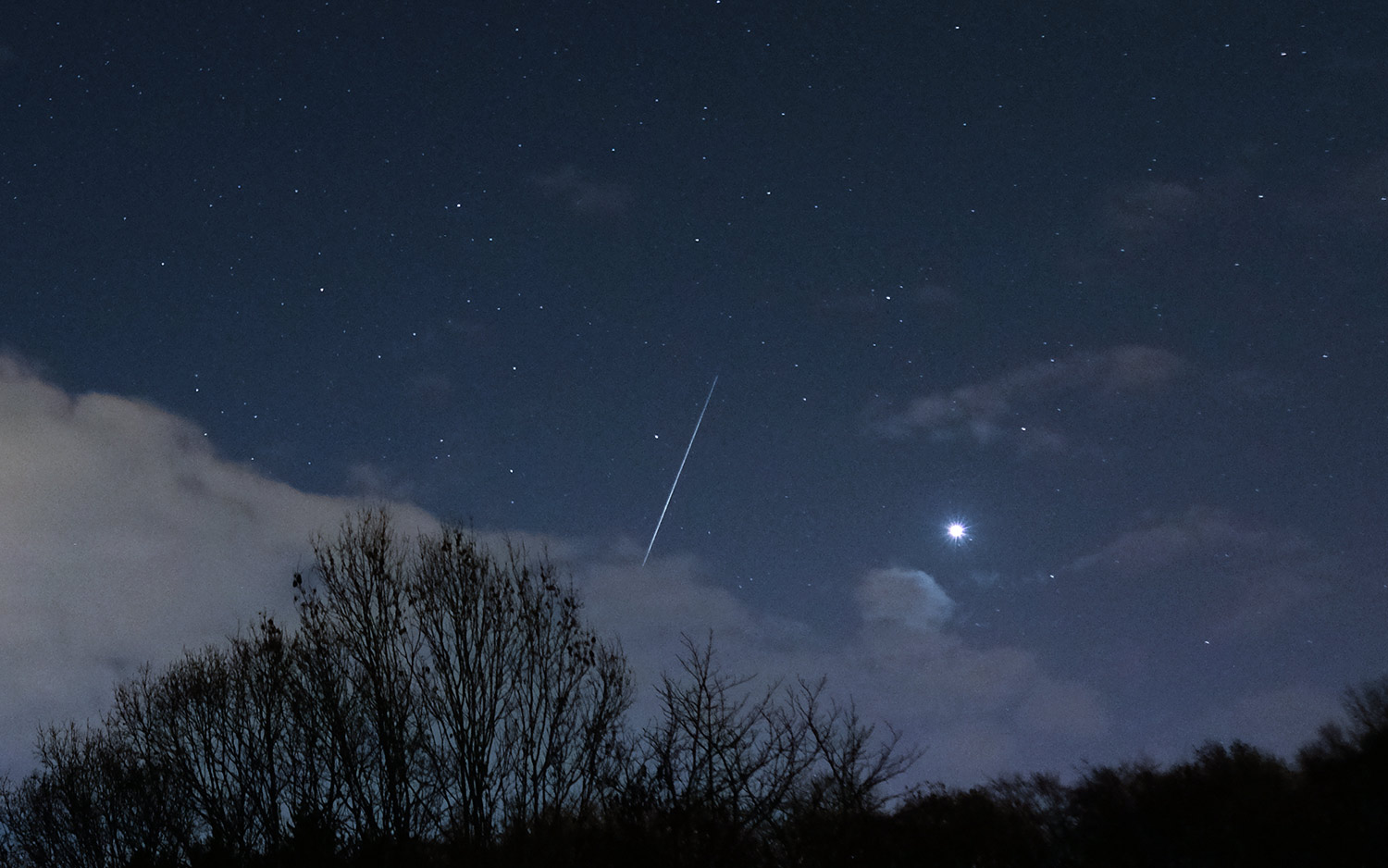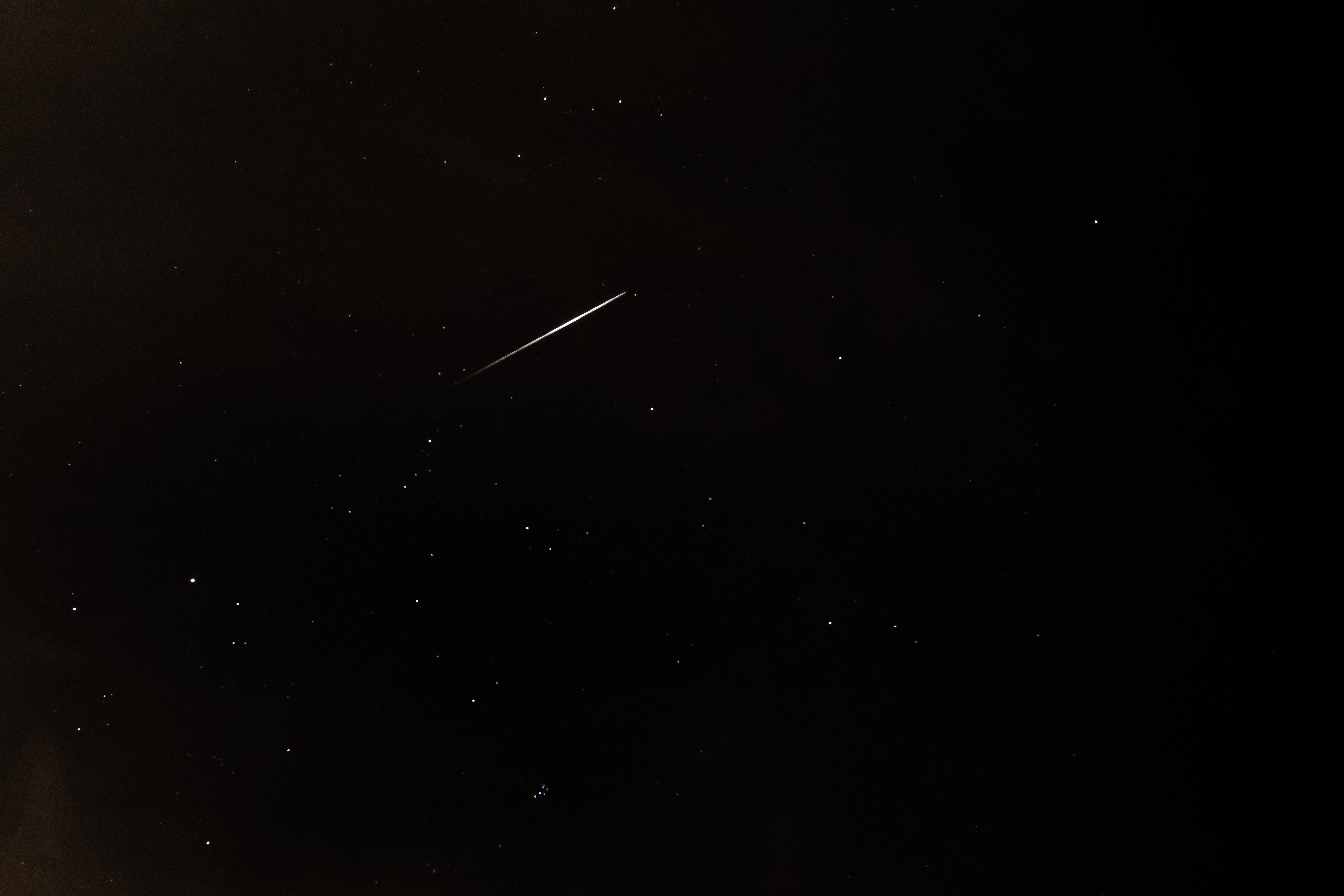Geminid Meteor Shower 2018: It's Not Too Late to Catch a 'Shooting Star'!

The Geminid meteor shower has already peaked — but you still have time to try to catch sight of what will likely be the best meteor shower of the year.
Earth flew through the densest patch of debris streaming off asteroid 3200 Phaethon early on Dec. 14, but the couple of days that remain to view the shower could still offer an enchanting spectacle. You can see amazing photos of the 2018 Geminids here.
If you want to try your luck during the last few days of the Geminids, here's what to do. First of all, scope out your skywatching location. You'll want someplace with dark skies, as far away as possible from civilization's bright lights. Next, check the weather — clouds can block even the brightest of fireballs. [2018 Geminid Meteor Shower Guide]
When you're ready to head out, don't forget to bundle up. It is winter, and you will be outside, unmoving, for at least half an hour, likely longer. You'll be better off without binoculars or a telescope, anyway, so don't forget to wear gloves or mittens.
The 2018 Geminids have dazzled spectators who managed to see it during the peak. Shen Zhang of Sunnyvale, California sent in one photo of a brilliant meteor as it streaked across the night sky over the the Bay Area around San Francisco.

In an email to Space.com, Zhang reported seeing between 20 and 30 meteors at about 9 p.m. PST at Skyline Ridge Preserve in nearby Los Altos.
"It was a little cloudy, but [I was] lucky enough to capture one shooting star using my camera," Zhang said.
Get the Space.com Newsletter
Breaking space news, the latest updates on rocket launches, skywatching events and more!
If you have a reclining lawn chair on hand, bringing it will make your skywatching experience more comfortable. To reduce the interference the moon's light causes, angle yourself so it's toward your back,t or wait until the very early morning, when the moon has already set.
Then, all that's left to do is wait. Your eyes will likely need about 20 minutes to adjust to the deep darkness, so settle in and give them the time they need. If you're patient and lucky, the Geminids will dance before your eyes.
Editor's note: If you snap an amazing photo of the 2018 Geminid meteor shower or Comet 46P/Wirtanen that you'd like to share with Space.com and our news partners for a possible story or image gallery, send comments and images in to: spacephotos@space.com.
Email Meghan Bartels at mbartels@space.com or follow her @meghanbartels. Follow us @Spacedotcom and Facebook. Original article on Space.com.
Join our Space Forums to keep talking space on the latest missions, night sky and more! And if you have a news tip, correction or comment, let us know at: community@space.com.

Meghan is a senior writer at Space.com and has more than five years' experience as a science journalist based in New York City. She joined Space.com in July 2018, with previous writing published in outlets including Newsweek and Audubon. Meghan earned an MA in science journalism from New York University and a BA in classics from Georgetown University, and in her free time she enjoys reading and visiting museums. Follow her on Twitter at @meghanbartels.









